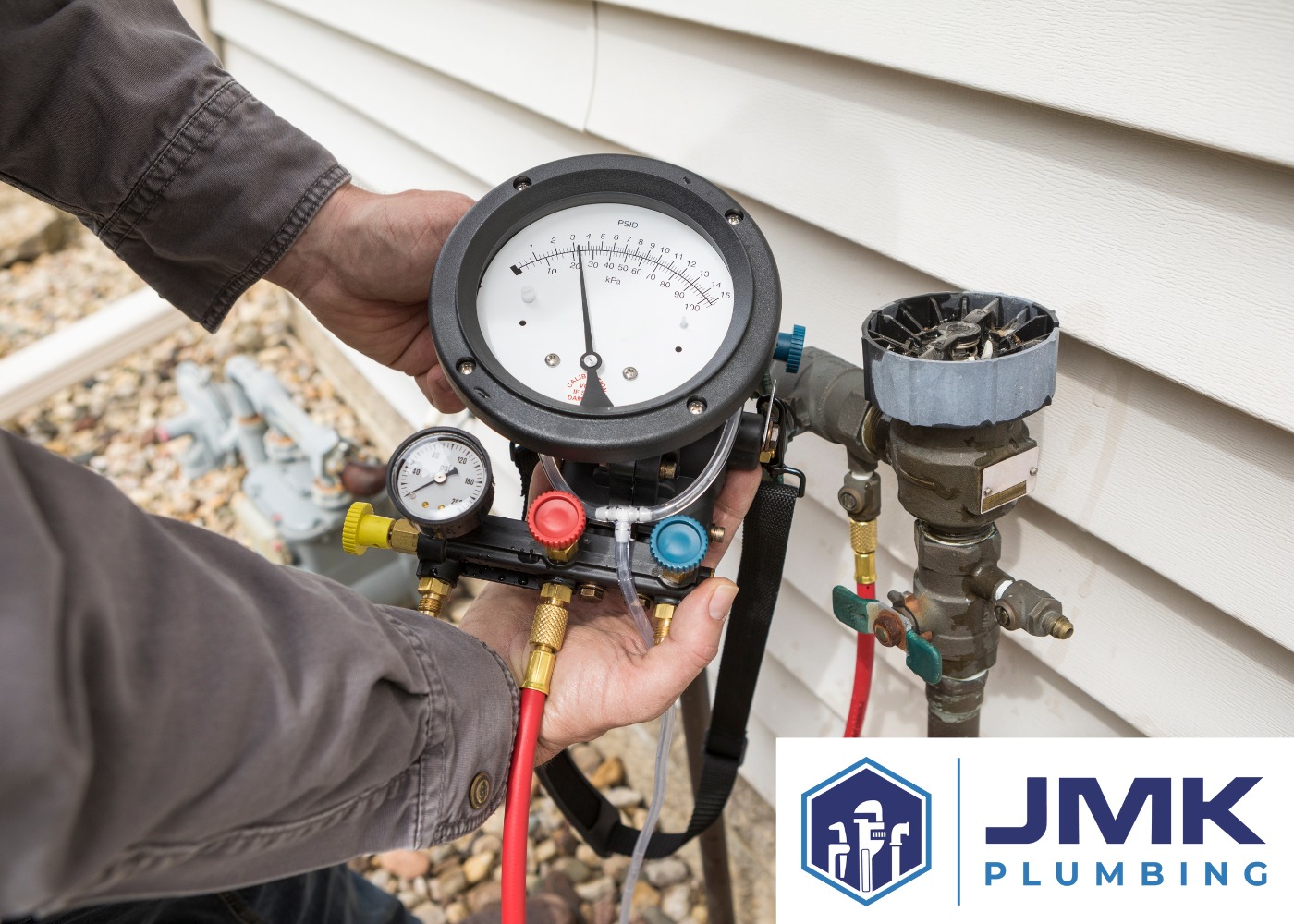Understanding Backflow : Causes, Consequences, and Prevention

Understanding Backflow: This article delves into the critical yet often overlooked issue of backflow in plumbing systems. It offers a comprehensive understanding of backflow’s causes, potential damages, and effective prevention methods. The role of professional services, such as JMK Plumbing, in maintaining the safety and integrity of plumbing systems is also highlighted. Equip yourself with this vital knowledge and ensure the longevity and functionality of your property’s plumbing systems.
Key Takeaways to Understanding Backflow
– Backflow occurs when hydraulic pressure on the outlet side exceeds the pressure on the inlet side.
– Cross connections in plumbing systems can lead to backflow and introduce contamination risks.
– Backflow can contaminate potable water supplies, posing serious health risks.
– Implementing a robust backflow prevention strategy is crucial to safeguarding water supplies.
The Science Behind Backflow: A Detailed Explanation
The fundamental principles of backflow, a critical plumbing phenomenon, can be comprehended through a detailed exploration of its scientific underpinnings.
Central to this are backflow mechanisms, which operate based on hydraulic pressure. In essence, backflow occurs when the hydraulic pressure on the outlet side of a system exceeds the pressure on the inlet side. This imbalance in pressure can lead to cross connections, introducing contamination risks into potable water supplies.
To mitigate these risks, check valves are typically installed at strategic points within the plumbing system. These valves allow water to flow in one direction only, effectively preventing backflow.
Understanding these principles is essential for maintaining the safety and integrity of any plumbing system.
Identifying the Primary Causes of Backflow
To effectively prevent backflow incidents, it is essential to first identify their primary causes, which often involve a range of plumbing system malfunctions and external factors.
One common cause of backflow is cross connections in plumbing systems. These unintended links between potable and non-potable water sources can lead to contamination if not properly managed.
Another critical factor is water pressure. In situations where the pressure in a supply pipe drops, the flow of water can reverse, leading to backflow.
Regulatory requirements also play a role in managing backflow risks. Ensuring that plumbing systems meet these standards is crucial in preventing common backflow incidents.
Thus, understanding these causes is the first step towards effective backflow prevention.
The Potential Damages: Unpacking the Consequences of Backflow
Backflow, a significant issue in plumbing, can cause severe damages to your potable water supply, and understanding its consequences is paramount in implementing effective preventative measures.
The health risks associated with backflow are serious, as contaminated water can lead to illnesses. Property damage is another consequence; untreated backflow can corrode pipes, leading to costly repairs.
The environmental impact of backflow is also a concern, as pollutants can infiltrate local water supplies. Additionally, backflow incidents can result in negative insurance implications, potentially increasing premiums or leading to policy cancellations.
Lastly, backflow prevention is not just good practice; it’s often a legal requirement, with non-compliance leading to hefty fines. Hence, understanding and preventing backflow is crucial.
Essential Steps for Effective Backflow Prevention
In order to safeguard your water supply from contamination and avoid the associated negative impacts, it’s crucial to implement a robust backflow prevention strategy.
This involves using effective backflow prevention techniques and employing reliable backflow prevention devices.
Compliance with backflow prevention regulations is also a non-negotiable aspect of this strategy, as non-compliance can lead to legal repercussions and exacerbate contamination risks.
Regular backflow prevention maintenance is another essential step, which ensures the functionality and longevity of your prevention devices.
Lastly, investing in backflow prevention training for your personnel can provide them with the knowledge and skills required to properly manage backflow risks, thereby fortifying your overall prevention strategy.
Case Study: Successful Backflow Prevention in Practice
Over the past decade, our company, JMK Plumbing, has successfully implemented backflow prevention measures for numerous clients in Miami Beach.
This case study analysis will provide real life examples of our best practices and success stories, along with the implementation challenges we’ve faced.
One prominent example involves a large hotel that faced recurrent backflow issues. Our team identified faulty valves as the root cause and replaced them with high-grade alternatives.
Despite the challenges posed by the hotel’s extensive piping system, we ensured proper system calibration and performed rigorous testing to prevent future backflows.
This case is just one among many where we’ve successfully protected our clients’ water supplies, attesting to our commitment to providing efficient and effective backflow prevention. We work closely with many property management companies in Miami Beach and Miami-Dade County to put together strategies for backflow testing and maintenance.
Conclusion
In conclusion, understanding backflow, its causes, and potential consequences is crucial for property owners.
It is important to take preventive measures such as regular maintenance and testing to ensure the safety of plumbing systems.
Professional plumbing services, like those offered by JMK Plumbing, can be utilized for effective backflow prevention, ensuring the longevity and functionality of the system.
Therefore, a proactive approach towards backflow management can mitigate potential damages and promote efficient plumbing systems.